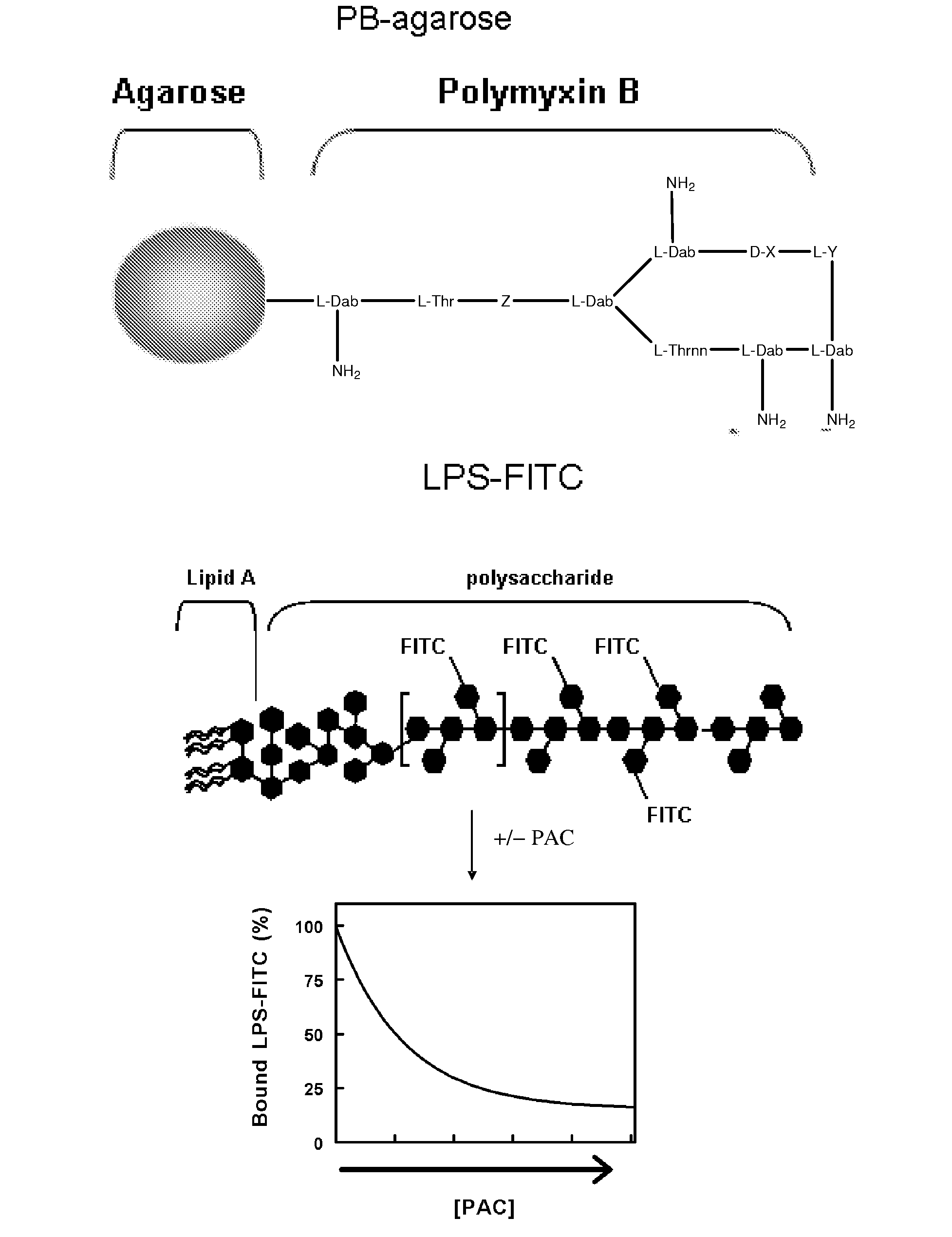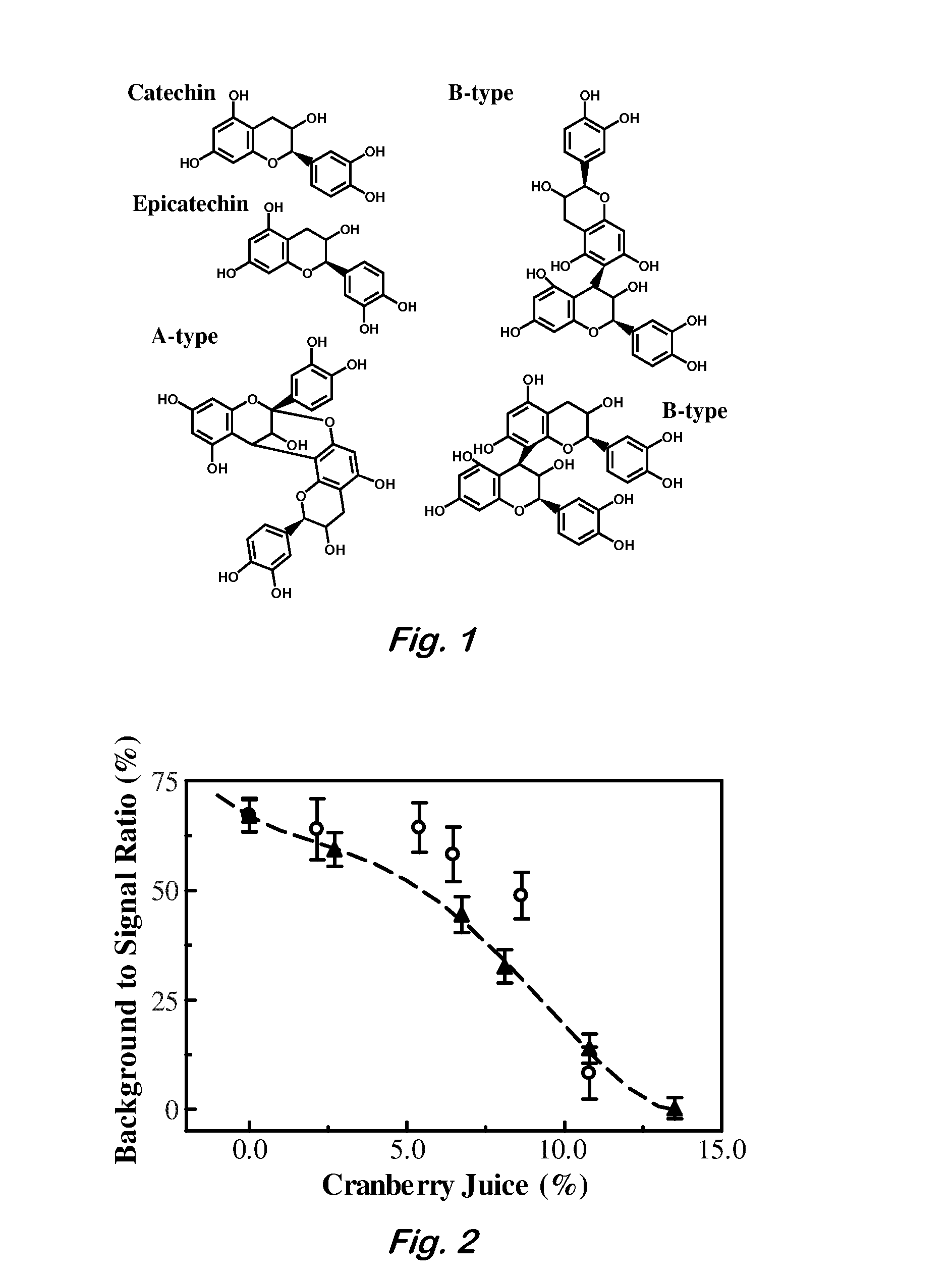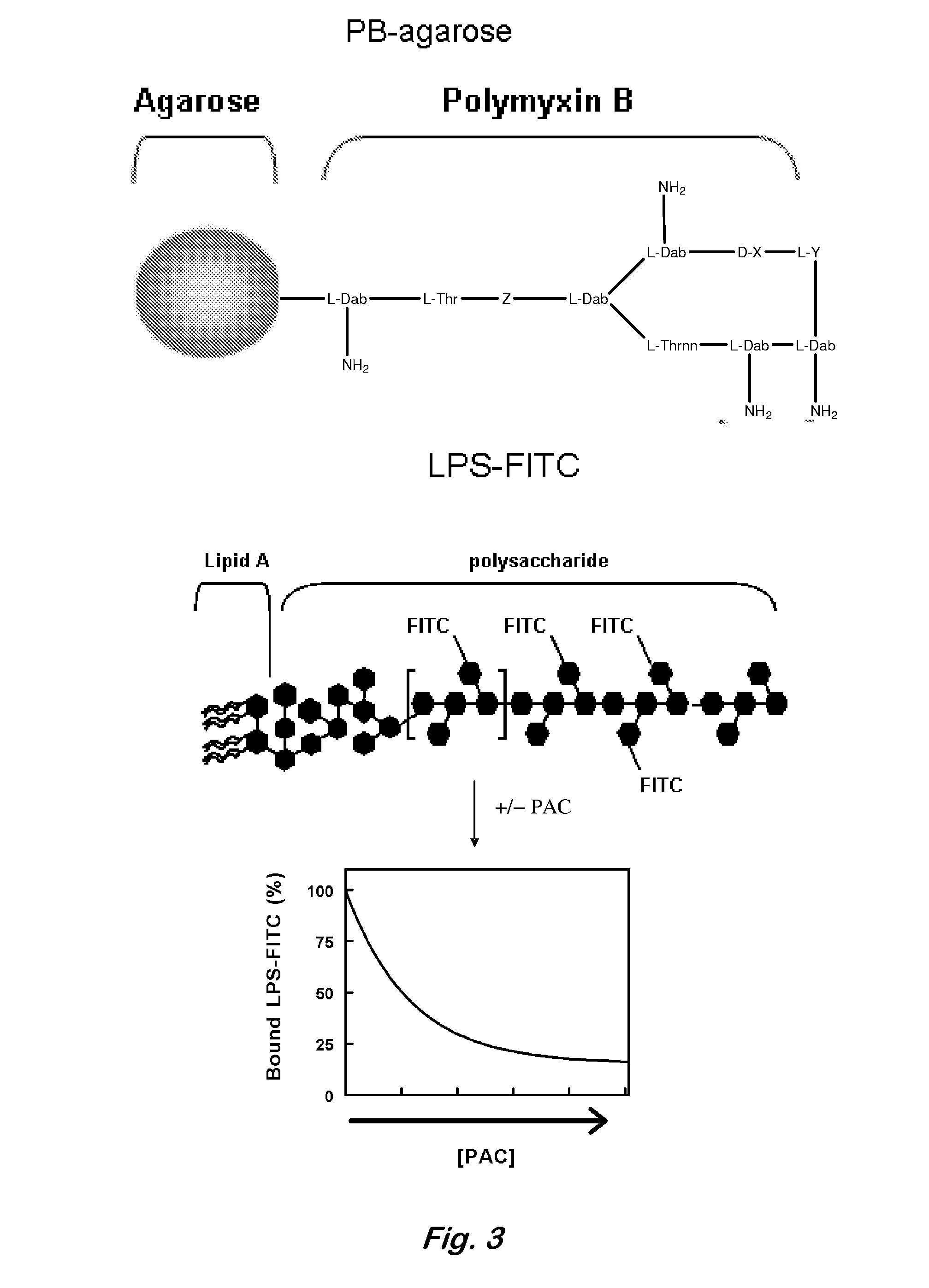Applications of the binding interaction of proanthocyanidins with bacteria and bacterial components
a technology of proanthocyanidins and bacterial components, applied in the field of proanthocyanidins, can solve the problems of ineffective neutralization of harmful bacterial toxins, high manufacturing cost, and inability to reuse, and each of these technologies has its own inherent limitations
- Summary
- Abstract
- Description
- Claims
- Application Information
AI Technical Summary
Problems solved by technology
Method used
Image
Examples
example 1
[0058]Purification of Proanthocyanidins—Dialyzed cranberry juice concentrate (DCC) was produced from Mountain Sun pure unsweetened cranberry juice (100% strength, Celestial Group, Inc.) by dialysis against water (6,000 MWCO dialysis tubing) and filtration through a 0.2 μm filter. PACs (in which nonspecific polyphenols have been removed) were obtained from whole cranberry juice, Welch's 100% red grape juice, or Lipton black tea via purification by hydrophobic adsorption chromatography using a Sephadex LH20 column (Hagerman, “The tannin chemistry handbook” http: / / www.users.muohio.edu / hagermae / tannin.pdf (2002)). Whole juice was reduced by rotary evaporation to a minimum volume and resuspended to the original volume in 70% acetone, sonicated for 30 min, and filtered with Whatman #3 filter paper. Resuspension, sonication, and filtration of the insoluble material was repeated twice more and all liquid was combined. This solution was reduced by rotary evaporation to remove all acetone and...
example 2
[0059]Non-specific Adhesion of E. coli—The Naval Research Laboratory Array Biosensor employs a protein-coated glass waveguide for the detection of analytes of interest (Rowe et al., Anal. Chem., 71, 433 (1999); Taitt et al., Microbial. Ecol., 47, 175 (2004); Golden et al., Talanta, 65, 1078 (2005)). The surface of the waveguide has a patterned array of capture molecules with non-specific passivating molecules used to coat other regions of the surface (Sapsford et al., Anal. Chem., 74, 1061 (2002); Ngundi et al., Anal. Chem., 77, 148 (2005); Shriver-Lake et al., Anal. Chem., 67, 2431 (1995)). Fluorescence-based detection of targets is dependent on discrimination of capture molecule areas from other areas of the waveguide. Non-specific adhesion of targets to unexpected areas of the surface negatively impacts limits of detection as well as false positive / negative rates for the Array Biosensor.
[0060]The combination of a nonpathogenic E. coil strain (ATCC 35218) and a low affinity antibo...
example 3
[0062]LPS binding assays—The ability of both of PACs to inhibit the interaction of LPS with PB was assessed using an agarose bead-based pull-down assay (FIGS. 3, 4). Polymyxin B (10 μM, conjugated to agarose beads (Sigma)) was incubated with 100 nM LPS-FITC (E. coli serotype B5:055, Sigma) in the absence or presence of DCC, non-dialysed LH20 PAC, or size-fractionated LH20 PAC in a final volume of 250 μL 0.05 M Tris buffer (pH 8.5). Reactions were stirred for 1 h at 25° C. in the dark. Unbound LPS-FITC was removed by three rounds of centrifugation and washing with 250 μL of 0.05 M Tris buffer, followed by resuspension in 200 μL of nuclease free water. Serial dilutions of each sample were prepared in nuclease free water and the fluorescence was measured by excitation at 495±2.5 nm and emission at 535+2.5 nm using a Saphire fluorescence plate reader (Tecan, Durham, N.C.). Comparable experiments were performed with LPS from Salmonella, Shigella, and Pseudomonas and LPS from mutant strai...
PUM
| Property | Measurement | Unit |
|---|---|---|
| Flow rate | aaaaa | aaaaa |
| Degree of polymerization | aaaaa | aaaaa |
| Absorbance | aaaaa | aaaaa |
Abstract
Description
Claims
Application Information
 Login to View More
Login to View More - R&D
- Intellectual Property
- Life Sciences
- Materials
- Tech Scout
- Unparalleled Data Quality
- Higher Quality Content
- 60% Fewer Hallucinations
Browse by: Latest US Patents, China's latest patents, Technical Efficacy Thesaurus, Application Domain, Technology Topic, Popular Technical Reports.
© 2025 PatSnap. All rights reserved.Legal|Privacy policy|Modern Slavery Act Transparency Statement|Sitemap|About US| Contact US: help@patsnap.com



